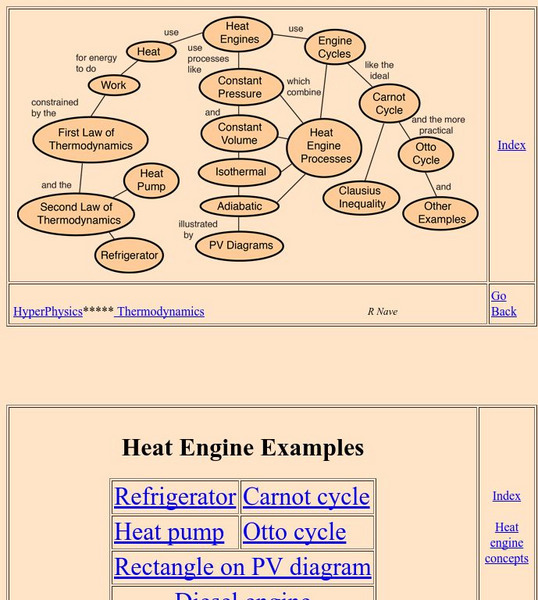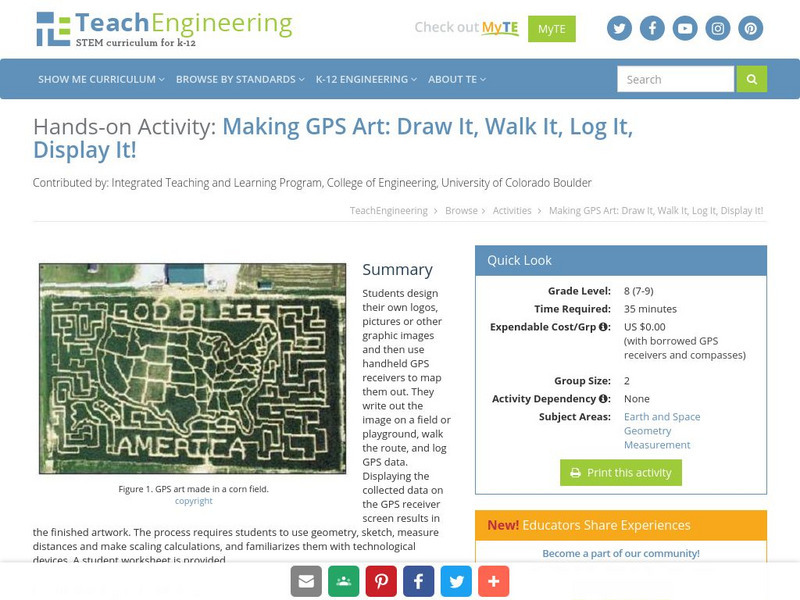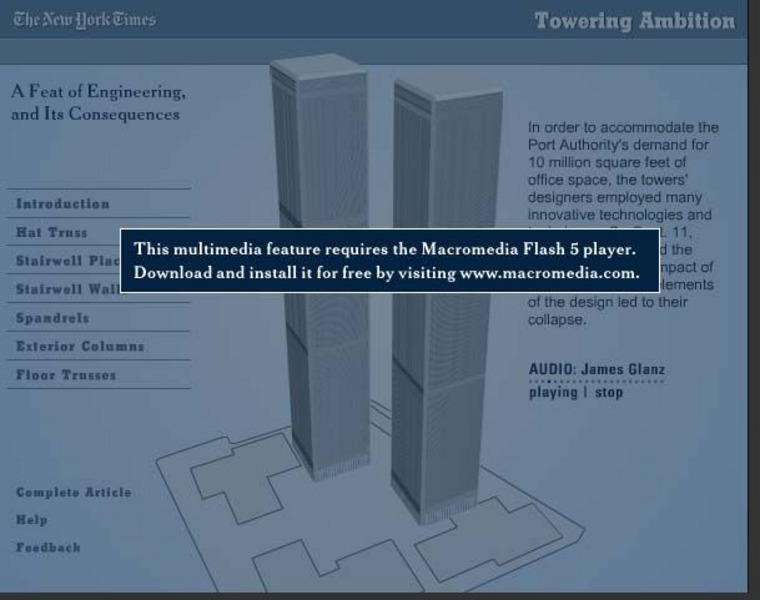University of Houston
University of Houston: Engines of Our Ingenuity: History of the Steam Engine
From the Engines of Ingenuity web site. A lengthy page discussing ingenuity and invention as it pertains to steam engine history. Very anecdotal and interesting. Includes biographical information and interesting details about Hero of...
University of Houston
University of Houston: Engines of Our Ingenuity: Fulton's Submarine
Discusses the technological and political conditions which led to Robert Fulton's invention and development of the submarine. Includes some biographical information and some graphics of early submarine sketches. (Text is the actual radio...
Georgia State University
Georgia State University: Hyper Physics: Heat Engine Concepts: The Otto Cycle
Schematic diagrams illustrating the operation of a four-stroke engine cycle. Interactive buttons allow you to step through the various steps of each engine cycle. Each graphic is accompanied by an excellent explanation.
Georgia State University
Georgia State University: Hyper Physics: Heat Engine Cycle
The heat engine cycle is defined and discussed. So pressure-volume diagrams are introduced and their use in depicting the cycles of a heat engine is demonstrated. Informative graphics are accompanied by reason-filled explanations.
Georgia State University
Georgia State University: Hyper Physics: Heat Engine Concepts
An indexing page for the HyperPhysics site. The page contains a concept map of links to a variety of other pages which discuss concepts related to heat engines. All pages contain informative graphics and excellent explanations.
TeachEngineering
Teach Engineering: Gps Art
Students design their own logo or picture and use a handheld GPS receiver to map it out. They write out a word or graphic on a field or playground, walk the path, and log GPS data. The results display their "art" on their GPS receiver...
TeachEngineering
Teach Engineering: Determining Concentration
Students quantify the percent of light reflected from solutions containing varying concentrations of red dye using LEGO MINDSTORMS NXT bricks and light sensors. They begin by analyzing a set of standard solutions with known...
TeachEngineering
Teach Engineering: Walk the Line: A Module on Linear Functions
This module leads students through the process of graphing data and finding a line of best fit while exploring the characteristics of linear equations in algebraic and graphic formats. Then, these topics are connected to real-world...
TeachEngineering
Teach Engineering: Graphing Equations on the Cartesian Plane: Slope
The lesson teaches students about an important characteristic of lines: their slopes. Slope can be determined either in graphical or algebraic form. Slope can also be described as positive, negative, zero or undefined. Students get an...
National Health Museum
Access Excellence: Graphics Gallery of Biotechnology
This site provides simple diagrams on all major topics in cell biology, genetics and biotechnology.
Other
Smith College: Heron's Steam Engine
From the Smith College Museum of Ancient Inventions website. Description of Heron's invention of the aeolipile - a precursor to the steam engine. Includes a graphic depicting a replica of the device.
Other
Aiga: Design Observer
A designer's portal featuring writings, news, and critical essays on graphic design, social innovation, urbanism, popular culture, and criticism.
Other
Nye Thermodynamics: Basic Gas Turbine Theory
Outstanding information (and a lot of it) on gas turbine (jet) engines. Describes the history behind their development and the theory behind their operation. Well written and includes very informative graphics.
Georgia State University
Georgia State University: Hyper Physics: Heat and Thermodynamics
Georgia State University Physics Department privides an incredibly thorough treatment of the laws of thermodynamics. Multiple pages; many informative graphics; opportunities to practice problems and receive immediate feedback.
Other
University of Cambridge: Inclusive Design Toolkit
This site provides tons of information about inclusive design. It has an Exclusion Calculator that can be used to assess a product once you understand the principles of inclusive design, as well as the Sight Exclusion Estimator -...
Curated OER
History of the Steam Engine
From the Engines of Ingenuity web site. A lengthy page discussing ingenuity and invention as it pertains to steam engine history. Very anecdotal and interesting. Includes biographical information and interesting details about Hero of...
Curated OER
History of the Steam Engine
From the Engines of Ingenuity web site. A lengthy page discussing ingenuity and invention as it pertains to steam engine history. Very anecdotal and interesting. Includes biographical information and interesting details about Hero of...
New York Times
New York Times: How the Towers Stood and Fell
A multimedia graphic explains how certain structural elements of the World Trade Center helped to delay its collapse when it was attacked on September 11, 2001, whereas other elements probably sped up the towers' fall.
Colorado State University
Colorado State Univ.: Heat Transfer Resistance Modeling
This site from the Colorado State University discusses the tranfer of heat by conduction and convection. Discussion centers around the application of these two heat transfer mechanisms to engines. The variables that effect the resistance...
University of Virginia
University of Virginia: Corliss Steam Engine
This essay from the University of Virginia provides an incredible graphic of the Corliss steam engine as shown at the America's Centennial Exposition, held in Philadelphia in 1876. Includes some descriptive text.
Other
Ductile Iron Society: Ductile Iron Data for Design Engineers
From the Ductile Iron Society web site. Data for the elasticity and strength of ductile iron are discussed. The effect of temperature upon yield strength, elongation (i.e., strain), and ultimate tensile strength are represented in...
Khan Academy
Khan Academy: What Are 3 D Shapes?
This Khan article explains how to write your own 3D graphics engine with some trigonometry!
Georgia State University
Georgia State University: Hyper Physics: Heat Pump
Heat flow from a hot region to a cold region is described and explained. Applications of this phenomenon (specifically heat pumps and refrigerators) are discussed. Excellent graphics.
University of Wisconsin
The Why Files: Keeping an Eye on Ions
Discusses the development of a new rocket engine that operates by the ion propulsion as opposed to gas propulsion. Well written and great graphics!


















